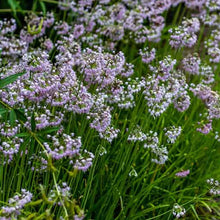Allium cernuum, commonly known as Nodding Onion, is a native North American perennial that adds subtle beauty to garden beds and wildflower meadows. Known for its unique nodding, bell shaped flowers that create a soft, airy effect.
Height & Spread: 12 - 18 in x 6 - 8 in
Bloom Time: Late spring to early summer
Light Requirements: Full sun to part shade
Soil Preference: Well drained, moderately fertile soil; tolerant of both sandy and clay soils
Watering Needs: Low to moderate; drought-tolerant once established
Deer Resistance: Deer resistant due to the pungent scent of its leaves and flowers
NATIVE STATUS
Native plant to North America. It can be found growing naturally in prairies, meadows, and open woodlands across the central and eastern United States, as well as parts of Canada. As a native species, it supports local ecosystems and biodiversity, making it a perfect choice for native gardens.
WILDLIFE & INSECTS
Butterflies
- Attracts a variety of butterflies, especially Swallowtails and Skippers. The nectar rich flowers provide an important food source for these butterflies during their active feeding periods.
Bees
- Highly attractive to bees, including honeybees, bumblebees, and solitary bees. The bell shaped flowers offer ample nectar and pollen throughout the blooming season.
Birds
- After the flowers fade, Allium cernuum produces seedheads that are enjoyed by small seed eating birds, including finches and sparrows.
Beneficial Insects
- Supports beneficial insects like ladybugs and lacewings, which prey on pests like aphids and mites, enhancing the overall health of the garden ecosystem.
SPACING & LANDSCAPE USE
Spacing Recommendations
- For optimal growth space about 6 - 8 inches apart. This allows for the plants to spread naturally while ensuring proper air circulation around each plant, which helps prevent mildew and other fungal issues.
Landscape Placement
-
Ideal for native plant gardens, wildflower meadows, pollinator gardens, and prairie style landscapes. It can be planted in rock gardens, along pathways, or at the edges of garden beds.
COMPANION PLANTS
-
Echinacea purpurea (Purple Coneflower) - Adds height, attracts similar pollinators, and offers bright purple blooms that contrast with Allium’s soft, delicate flowers.
-
Coreopsis verticillata (Threadleaf Coreopsis) - A bright, cheerful companion that blooms around the same time and attracts bees and butterflies.
-
Penstemon digitalis (Beardtongue) - Provides vertical interest and attracts hummingbirds, a great addition to a pollinator friendly garden.
-
Lupinus perennis (Wild Blue Lupine) - Native and attractive to both bees and butterflies, it pairs beautifully with Allium cernuum’s nodding flowers.
-
Asclepias tuberosa (Butterfly Weed) - Provides vibrant orange flowers that contrast beautifully with the soft, bell shaped blooms of Allium.
-
Solidago rigida (Rigid Goldenrod) - Adds late season color and attracts pollinators, blooming after Allium finishes its show.
-
Achillea millefolium (Yarrow) - Offers airy fern like foliage and blooms in flat clusters that attract both pollinators and beneficial insects.



